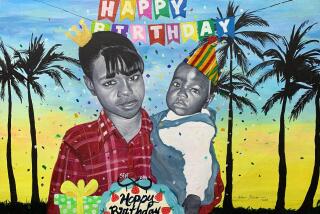Leap of Fate
- Share via
Something is missing from your calendar this year. At least, that’s the way many people born Feb. 29 see it.
“Calendar companies don’t recognize the day for what it is,” said Raenell Dawn, an L.A. native born on leap year day 1960. For 16 years, she and other members of her club, the Honor Society of Leap Day Babies, have asked calendar manufacturers to include the words “Leap Year Day” on Feb. 29, “just like it says New Year’s Day.”
So far, her efforts have been in vain. But there is hope:
“Hallmark has not in the past mentioned leap day on calendars,” company spokeswoman Rachel Bolton confirmed, “but because of perceived consumer interest, we plan to in the future.”
Still, Dawn and others like her feel slighted. Cheated out of an annual birthday, they are part of a movement of “leapies” and “29ers” who are campaigning for the wide-scale recognition--and celebration--of Feb. 29.
Mary Ann Brown, 68 today (17 in leap years), founded the Worldwide Leap Year Birthday Club and Festival in 1988. While her club has only 300 members, her quadrennial celebration now draws about 10,000 people from around the country and abroad--so many that her hometown of Anthony, Texas, bills itself as the “Leap Year Capital of the World.”
This year’s festival kicked off Saturday with a hot air balloon liftoff followed by a chuck wagon breakfast, 10K run, pig race, square dance and fishing tournament. Today the celebration continues, with a parade, a party and a performance by Graham Nash (of Crosby, Stills and Nash, whose wife Susan is a leap year day baby).
“The best [part of being born Feb. 29] is that when you have a real birthday, it’s so special,” said Susan Nash, who turns 48 today--(12 in leap years). “It’s like being a unicorn or something.”
Nash said she takes advantage of the gap between birthdays to plan large parties for herself. She’s not the only one to make up for lost time with extravagant celebrations.
“I celebrate twice because I can,” said Dawn, who in nonleap years fetes herself on Feb. 28 and March 1.
She once chose a telephone number so the last four digits spelled “leap.”
“I’m very into my leapness,” she said.
This year, Dawn took a two-week leave of absence from her job as the “Salem, Ore., visitor lady” to celebrate. A ham radio operator, she is spreading the gospel of “leapness” via ham radio in the hopes of reaching “other leaping hams.”
Dawn has created a glossary of leap year-isms, what she calls a “leaptionary.” Girls born leap year day are “leapettes.” Boys are “leapsters.”
In 1988, she co-founded the honor society (https://www.leapdaybabies.com) to “find other people out there who . . . get childlike excitement when our birthday actually appears on the calendar.”
The club now has 1,200 members, many of whom see themselves as special. Indeed, being born Feb. 29 has its perks.
“The nice thing is I’ll never be 50,” said Nash, whose 50th birthday falls during a nonleap year. “I don’t have to acknowledge a nonexistent day.”
Chari Shanker, 48 today, said, “My greatest leap year feat is that I have gotten in for [the price charged] children under 12.” (Those days would appear to be over.)
Production manager for the L.A. Opera, Shanker said her birthday is a great conversation starter and that “on leap years everyone remembers my birthday.”
Leap year was first observed in 1752, which makes 2000 the first millennial leap year in history. They take place every four years to account for the fact that the true length of a year (the time it takes the Earth to make a full revolution around the sun) is about 365 1/4 days.
The chances of being born Feb. 29 are 1,461 to 1. About 187,000 Americans are leap year day babies.
“It’s very unique,” said Dawn, 10 in leap years today. “I hope I get Monopoly again. That’s what I got when I turned 10 before. But if I do, I want the Monopoly deluxe edition.”
Susan Carpenter can be reached at susan.carpenter@latimes.com.
More to Read
Sign up for The Wild
We’ll help you find the best places to hike, bike and run, as well as the perfect silent spots for meditation and yoga.
You may occasionally receive promotional content from the Los Angeles Times.






